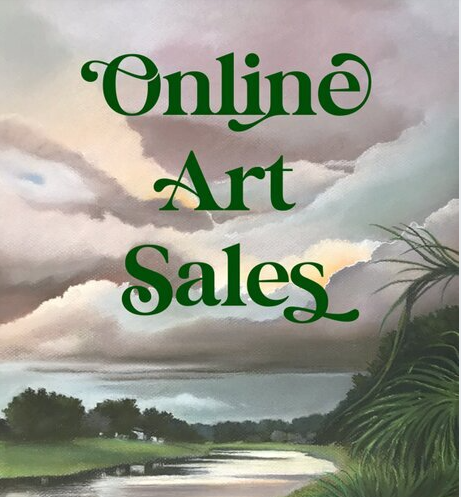by Carolyn Edlund
Artists who want to sell online have choices, including third-party sites or their own websites. Here are the pros and cons.

There are many options for artists who want to sell online. One choice is to use a third-party site that features the work of many artists. Some examples are Etsy, Saatchi Art, UGallery, Artfinder and Amazon Handmade, although many others exist. Their business model is to offer access to artists and makers of all types.
Benefits of Third-Party Sites
There are a number of benefits of third-party websites which make them very popular. Quite often, there is no barrier to starting your own shop, although some sites require that you must submit an applications and be approved. When setting up, you don’t have to start from scratch or reinvent the wheel. It’s easy to upload images of your work, write descriptions and set your prices, then launch.
Many times, third-party sites have high Google rankings, and a robust level of existing traffic. They provide a number of services, such as an individual page on their site for your artwork, customer service, and a secure shopping cart. It’s simple to get into the business of selling your art or handmade items on these platforms, which is a key reason many creatives use them when starting out.
Drawbacks of Third-Party Sites
Third-party platforms host artists as sellers, draw traffic, and oversee all sales. This also means that they make the rules. Any third-party platform can evict you, charge fees or increase them, or require terms that you aren’t comfortable with. And that leaves you with little recourse.
E-commerce websites are crowded with the work of many other artists and makers. Therefore, you must find a way to stand out. You might have to spend hours every week trying to get featured on the front page of the site, or pay fees to buy ads on the platform. And, regardless of the popularity of a site, you must do your own art marketing. You cannot depend on the platform to bring you all the traffic you need to make sales.
You also have no control over the quality or type of the other work displayed. Some sites have a huge mix of wonderful items and not-so-wonderful items for sale. They can resemble a giant yard sale where anything goes. You must decide if that type of platform is right for you.
One main disadvantage is that you have no way for customers to sign up for your email updates. The host site gathers email addresses from its visitors, but does not share them with you. Other third-party websites will show your art or handmade work on your page, but have images and links to other artists in a sidebar or header. This encourages visitors to click away and look at products on the site which are not yours.
Many times, artists feel that although they started out displaying their work on a third-party site, they have outgrown it. If that describes you, you will definitely want to look into making an investment in your own website.
Benefits of Your Own Artist Website
The main benefit of having your own site is that you are, of course, completely in control. No one can close you down, tell you what you can and cannot do, or change your business model.
You can gather email subscriber addresses to build a list for email marketing, which is one of the most effective ways to sell and grow relationships with collectors.
It’s easy to incorporate e-commerce right into your own website in the form of a secure shopping cart. These services are available as plug-ins on WordPress, or by using a customizable e-commerce storefronts like Shopify or Squarespace.
There are also website providers with templates that you can easily customize, and tons of features built specifically for artists. They act as the host of a free-standing art site that you own and control. FASO, Art Storefronts and Artspan are some examples of these providers. They help minimize the cost for artists who want exposure without the big price tag that a customized site can command. And, they may provide print-on-demand services that help you expand your product line with other merchandise.
Drawbacks of Your Own Artist Website
A solo art website features your work only, and can give you greater credibility as an artist. But it’s up to you to create great content, share outstanding images of your art, and provide enough information to lead visitors through to the sale. If you are just getting started and don’t have a large body of work, you may not be ready for your own site.
When you build an art website, you must pay careful attention to the elements, such as an appealing Home page, an effective About page, and a customer-centric FAQ page, to get the best results. If you are not tech-savvy, you may have to get paid assistance, which makes this option more expensive than participating on third-party platforms.
Once your site is launched, you must drive traffic to it through advertising, social media, email marketing, SEO efforts and other methods. Marketing activities are essential. And although you must also market with third-party providers as well, solo websites start from zero. They don’t get the boost of an already-busy host platform.
Getting Started
Ultimately, your choice between third-party providers and your own artist website will depend on several factors. These include your experience level and how serious you are about being an artist entrepreneur. However you decide to enter the online marketplace, you will gain exposure and have the opportunity to share your art with a global audience. That’s a great start for any aspiring artist!


Speak Your Mind